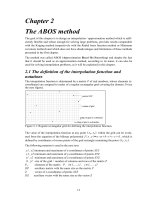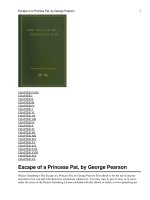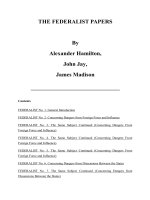Watercolor : The simplicity of the Direct Method potx
Bạn đang xem bản rút gọn của tài liệu. Xem và tải ngay bản đầy đủ của tài liệu tại đây (113.16 KB, 5 trang )
Watercolor : The simplicity
of the Direct Method
The art of watercolor involves a great many techniques. One I follow is
called the "direct method" and is achieved by attempting to paint accurate
color values and shapes in the first stages of the painting process. Of course,
adjustments will be made in some areas before the work is completed. Even
so, the "direct method" saves a great deal of time and allows the colors to
glow with freshness.
Pencil Sketch
The first step to success is to
choose fine source material. I
choose one of my own
photographs that has good
color and composition.
Having taken the photo, I am
familiar with the sense and
feel of the subject. I use my
art projector, lightbox or slide
projector (when working
from a slide) to transfer the
composition in pencil to my
watercolor paper. I am careful
to use a light touch and to
keep the eraser and my hand
prints off the paper as much
as possible. The watercolor
paper is then taped with
masking tape on all four sides
to a support such as a piece of
masonite, foamcore or plastic
sheeting.
First Washes
The original photograph is
now my guide for color, and
that is why I prefer prints to
slides. I find it difficult to be
looking into a hand-held slide
projector while I am painting.
There are table slide
projectors, but the room has
to be darkened, so that is
another drawback.
Fill in Washes
I start with a color that I think
is correct and try to find other
areas in the composition that
have the same color (or close
to it) and paint them. When
my first color notes are dry
and I am able to paint next to
them, I continue placing light
values next to dark values and
warm colors next to cool
colors just as they are in the
photograph. The exceptions I
make are basically to
intensify the focal areas of the
work.
Completed
When the bodies of color are
completely dry, I add texture
and linear details to enhance
the main areas of interest. In
this demonstration, I left the
work rough and put some of
my fingerprints in the wet
paint for texture.
Painting time was about 8
hours.









